The wool coats of sheep need shearing multiple times a year, and not just to make that new sweater you’ve been eyeing. For sheep to remain healthy, they need to shed their wool.
However, not all breeds need shearing. Fascinating, right?
Certain domestic and wild sheep shed their coats naturally throughout the year; no shearing necessary.
Table of Contents
Why Do Some Breeds Need Shearing and Not Others?
Whether it’s naturally or with a little help from human shearers, sheep need to shed their coats every year.
Most sheep breeds can’t shed naturally anymore because it was bred out of them.
Sheep must shed their coats to stay healthy.
Overheating in the summer months is one of the main problems because it can cause death.
Thick wooly coats also disguise weight loss, which is another threat to the health of your sheep. Matted and tangled coats can restrict blood supply and impact the sheep’s movement.
Another factor to consider is too much wool growing over the eyes, which can cause blindness.
During the lambing season, the area around the ewe’s teats must be free of hair. This is to ensure that lambs can properly nurse and get sufficient nutrition.
You can read more on why sheep need to be sheared here.
Farmers enjoy raising wool sheep because they don’t need much human intervention and can withstand harsher environments than their fellow cousins.
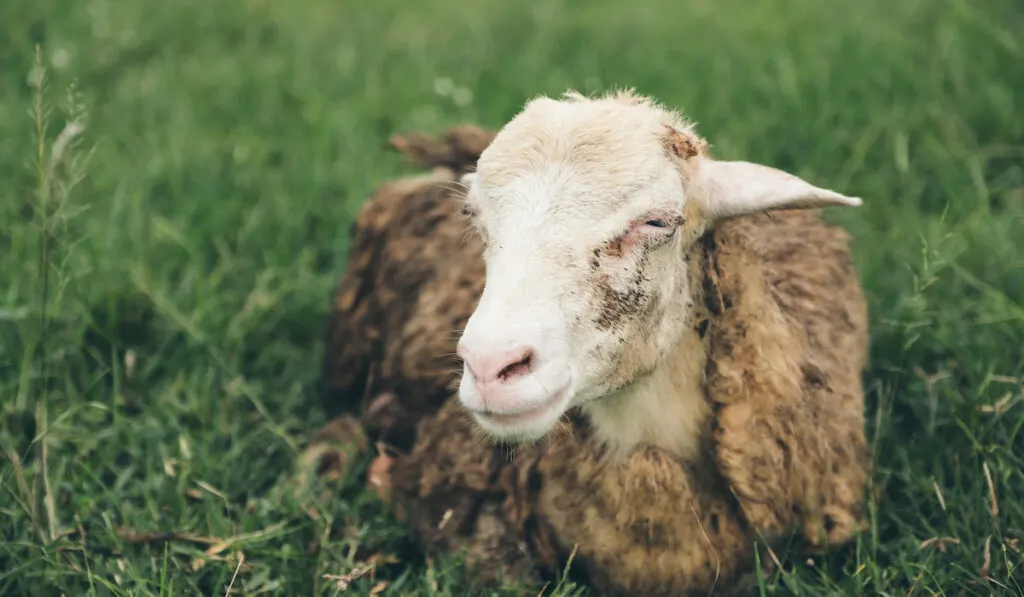
Are There Sheep Without Wool?
Some sheep breeds don’t need shearing because they have hair instead of wool coats.
Most animals have hair coats and shed them naturally every spring. “Hair sheep” do the same, so they don’t need shearing.
You can’t spin wool from hair sheep. Hundreds of years ago, shepherds started breeding their sheep to have longer hair fibers that continuously grew. It’s still the same for most modern sheep breeds.
Hair sheep are sturdy, adaptable, and less prone to diseases. They are growing in popularity across the U.S because they make delicious meat, smooth leather, and require little effort to properly care for them.
Small farms benefit from hair sheep, too. Shearing can sometimes cost more than the wool it produces.
Most hair sheep are domesticated breeds with lineages that go as far back as the 1700s, but some people raise wild breeds.
9 Breeds of Sheep That Do Not Need Shearing
These nine sheep breeds don’t need shearing and are all domesticated breeds. They are full of character and adorable like other sheep.
Barbados Blackbelly
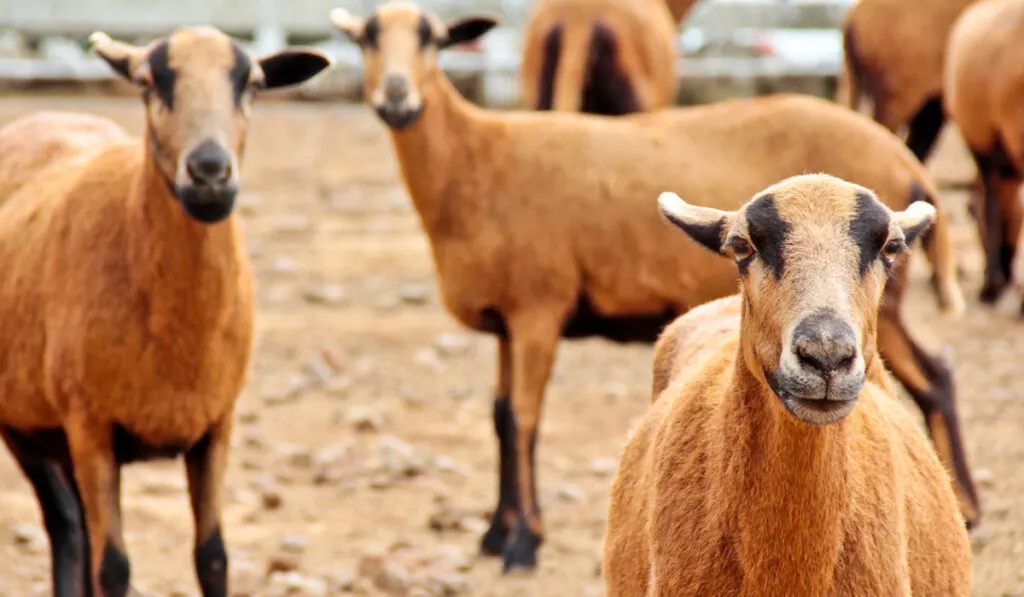
When the island of Barbados was colonized by the British, they brought African hair and wooly European sheep with them. The combination of these two breeds was the Barbados Blackbelly. In 1904, the USDA introduced them to the United States.
The Barbados Blackbelly is quite tall and resembles a small deer or antelope. It is highly energetic and alert. They have medium-thick hair which sheds naturally in the spring and doesn’t need shearing.
St. Croix
Like the Barbados Blackbelly, the St. Croix evolved from African hair sheep and wooly European breeds. It is part of the Caribbean Hair Sheep family and is also found in the United States.
The St. Croix is a small domesticated breed with high parasite resistance. It is also well known for its high fertility rate. Being good foragers, they are extremely useful as ‘lawn mowers’ when they browse in the orchards.
The St. Croix’s hair coat sheds naturally every year, and it doesn’t need shearing.
Wiltshire Horn
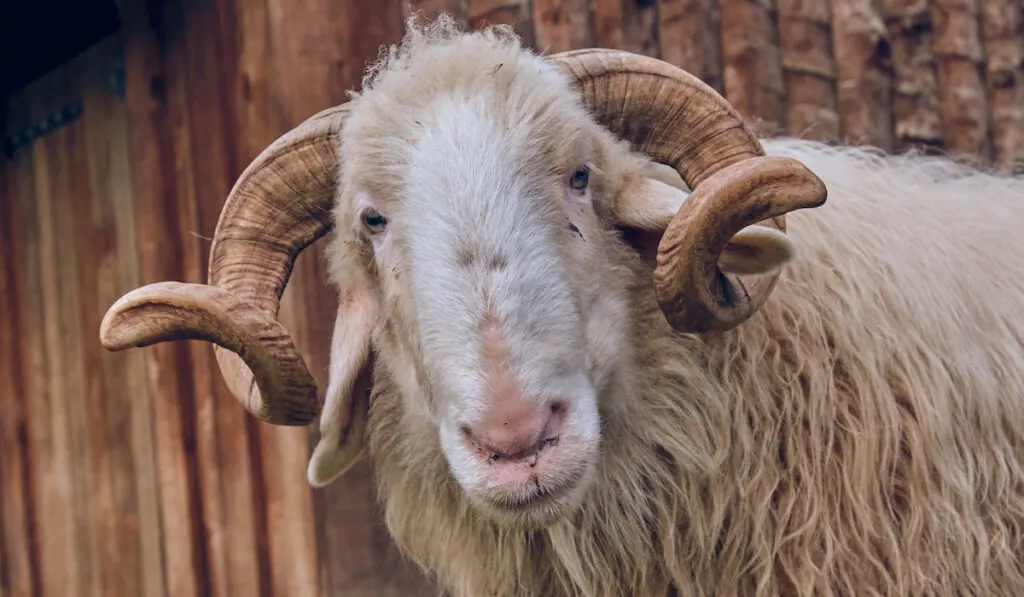
The Wiltshire Horn is indigenous to the county of Wiltshire in southwestern England. They are the descendants of large white sheep that were the dominant breed across Southern England in the 1700s.
When other sheep breeds were introduced to the region, the Wiltshire Horn was threatened with extinction. Supporters formed a breeders association in 1923 and saved the domesticated breed.
They are large sheep with both males and females growing imposing spiral horns, hence the name. The Wiltshire Horn sheep’s coat is short and a mixture of wool and fine hair. It’s not thick enough to spin.
It sheds naturally in the spring, so no shearing is necessary.
Blackhead Persian
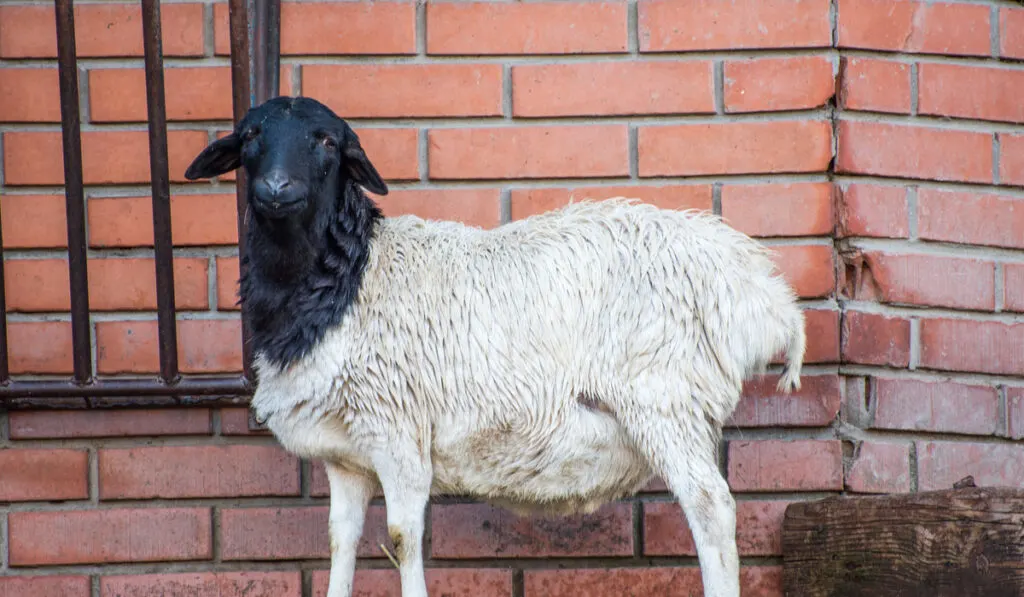
The Blackhead Persian is a fat-tailed domestic sheep breed introduced to South Africa in 1869. It is descended directly from Somali/Saudi Arabian sheep.
They arrived in Cape Town by ship after a storm damaged it and forced them to port. It was carrying one ram and three ewes.
The Blackhead Persian is a small sheep, and its fat tail is used to produce processed meats.
The skin of this breed is excellent for leather glove manufacturing. The Blackhead Persian is smooth-haired and sheds naturally without shearing.
Katahdin
Katahdin sheep are popular in the United States. Michael Piel created this breed at his farm in Maine.
He started with his inquiries into hair sheep in around 1956. Their descendants are originally from the Caribbean and the British Isles.
They are a medium-sized, domesticated breed. Katahdin Sheep are docile and sometimes have the instinct to flock.
These sheep are low maintenance and hardly need parasite treatments. The Katahdin is a smooth-haired breed.
Dorper
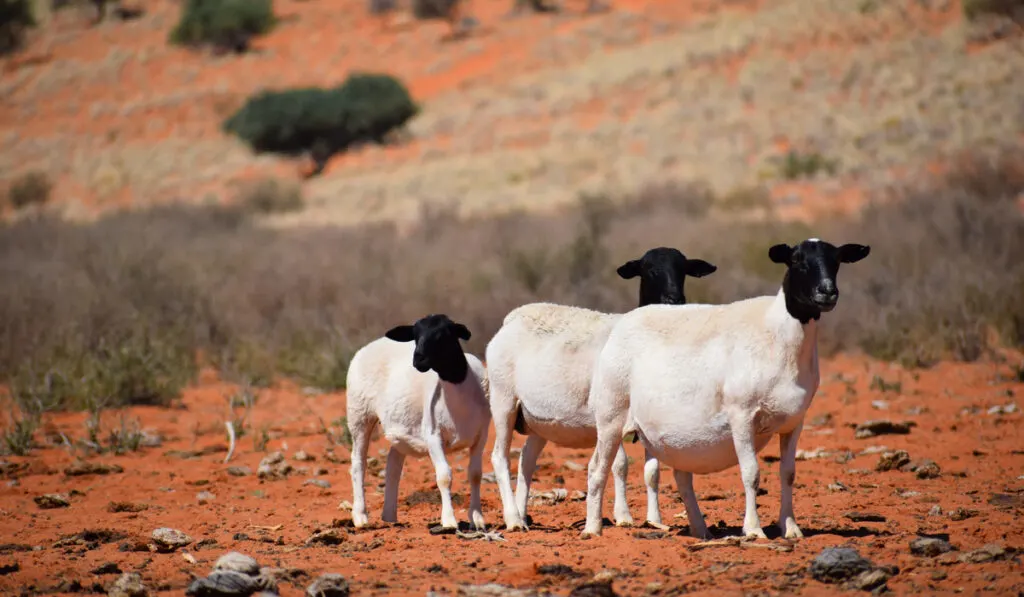
The Dorper is a South African domesticated breed that does exceedingly well in the dry desert-like regions of that country.
Farmers developed this breed from the Dorset Horn and Blackheaded Persian in the 1930s. They usually have blackheads (Dorper), but sometimes lambs are born with whiteheads (White Dorper).
They are hornless, very fertile, adaptable, and hardy. Their skin is highly sought after for leather goods. The Dorper has a short coat that is a mixture of hair and wool. It sheds naturally and does not need shearing.
Red Maasai
The Red Maasai sheep is a domesticated breed found in the semi-desert regions of Kenya and Tanzania. Also known as Tanganyika Sheep, they are mostly kept by the Maasai and other tribes in the two countries.
Red Maasai are large sheep and disease resistant. They are kept for their meat and lard.
The Red Maasai sheep’s outstanding characteristic is their thick red hair. It sheds naturally every spring and does not need shearing.
American Blackbelly
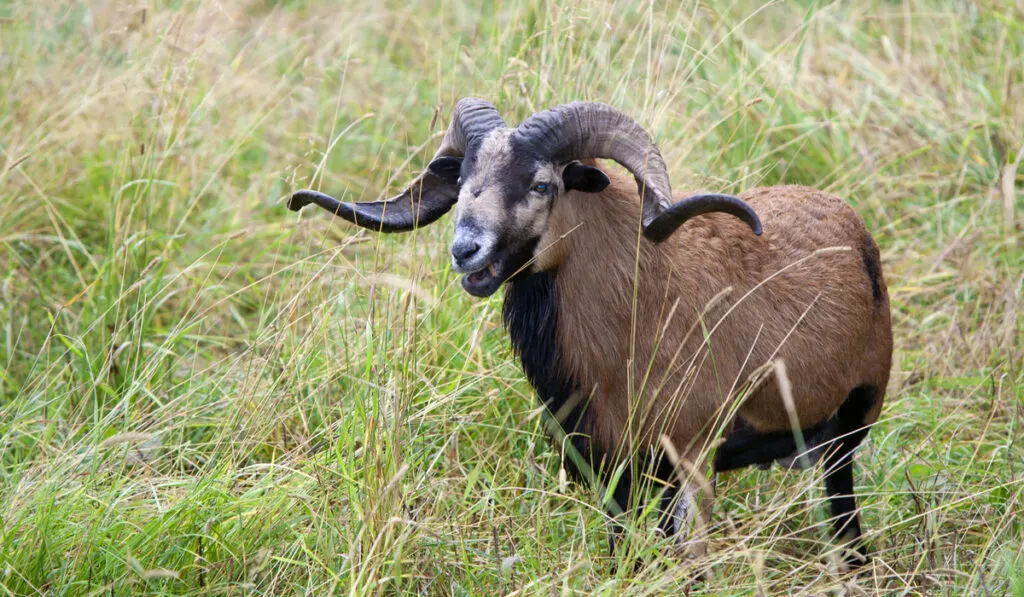
The American Blackbelly is a domesticated sheep breed developed by crossing the Barbados Blackbelly with two other breeds. These are Rambouillet and Mouflon, originally from France.
The American Blackbelly is a large, horned sheep. It is exotic looking with black badger facial markings and similar markings on the legs and belly. The American Blackbelly sheep have medium to thick hair that sheds naturally.
Romanov
The Romanov sheep is a domesticated breed that originated in the Volga Valley in Russia. Today, you will find them in countries around the world.
The standout characteristic of this breed is its ability to produce literally litters of lambs. They also produce delicious milk.
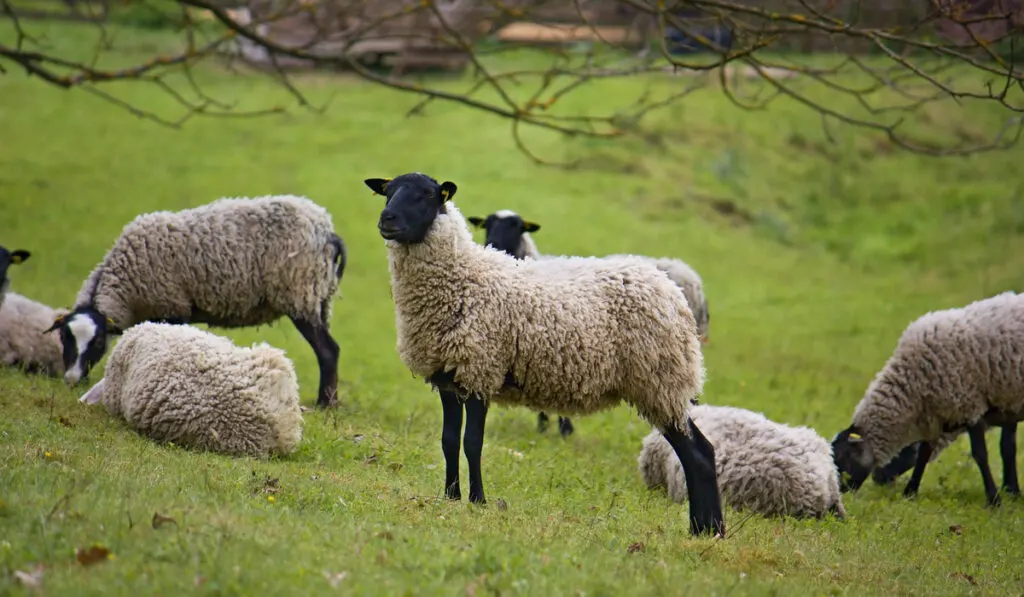
It is popular because their coats are closer to wool but still classified as hair.
You can spin their hair, but most farmers don’t do this. Even so, Romanov sheep shed naturally and don’t need shearing.
There you have it. Not all sheep need shearing because they sometimes have hair instead of wool. Hair sheep are great for meat, leather, milk, and lard production. They are sturdy and resistant to most parasites.
These nine breeds are sought after around the world and make wonderful backyard farm animals.
Resources
- https://modernfarmer.com/2017/12/8-sheep-dont-require-shearing/
- https://www.offthegridnews.com/how-to-2/5-easy-hair-sheep-breeds-you-wont-ever-have-to-shear/
- https://morningchores.com/hair-sheep-breeds/
- http://afs.okstate.edu/breeds/sheep/barbadosblackbelly/
- https://livestockconservancy.org/index.php/heritage/internal/st-croix
- https://livestockconservancy.org/index.php/heritage/internal/wiltshire-horn
- http://afs.okstate.edu/breeds/sheep/dorper/
- http://afs.okstate.edu/breeds/sheep/katahdin/
- https://www.farmersweekly.co.za/farm-basics/how-to-livestock/the-basics-of-the-persian-breed/
- http://agtr.ilri.cgiar.org/read_massai
- https://www.blackbellysheep.org/about-the-sheep/american-blackbelly/
- https://morningchores.com/romanov-sheep/
